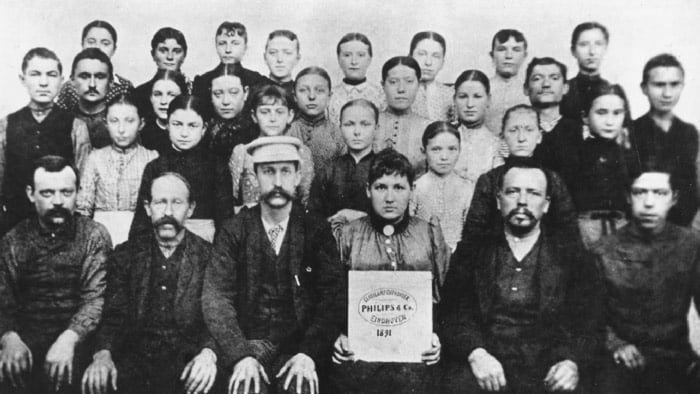Philips has become a household name synonymous with cutting-edge technology, continually shaping industries through its relentless innovation. Over the course of its history, the company has transitioned from a small Dutch start-up to a global leader in health technology, lighting, and consumer electronics. In this article, we’ll explore how Philips’ journey unfolded, driving its rise to prominence and its current leadership in health and lighting sectors. Uncover the advanced capabilities of the Philips 5500 LatteGo review
The Birth of Philips: A Modest Start
Philips was founded in 1891 by Gerard Philips and his father Frederik Philips in Eindhoven, Netherlands. Initially, the company focused on producing carbon-filament lamps, facing significant challenges, including fierce competition and financial instability. Despite these early hurdles, the founders' dedication to quality laid the groundwork for the company's future success as a global innovator. Get a closer look at the features of the Philips 5400 LatteGo review
Early Milestones in Innovation
By the turn of the 20th century, Philips had positioned itself as a key player in the European lighting market. The company’s focus on innovation and large-scale production led to the creation of its Research Laboratory (NatLab) in 1914. This lab would go on to become a driving force behind Philips' technological breakthroughs and its entry into new industries, paving the way for future growth. Compare these two machines side by side in the Philips LatteGo 5400 vs 4300 review
Expanding into Radio Technology
The 1920s and 1930s marked a period of diversification for Philips, with the company entering the burgeoning radio industry. In 1927, Philips began manufacturing radios, and by 1932, the company had sold over a million units, establishing itself as a major force in consumer electronics. This success highlighted Philips' ability to anticipate consumer needs and capitalize on emerging trends. Discover the differences among these models in the Philips 3200 vs 4300 vs 5400 review
Overcoming Wartime Challenges: Innovation Amidst Adversity
World War II brought immense challenges to Philips, including operational disruptions and damage to its facilities. However, the company exhibited remarkable resilience, relocating key personnel to ensure critical research continued. During the war, Philips made contributions to radar technology, demonstrating its ability to adapt and innovate, even during difficult times. Learn how these two models compare in the Philips 3200 vs 4300 review
The Post-War Innovation Boom: The Audio Cassette Revolution
After World War II, Philips shifted its focus towards consumer products and achieved another milestone in 1963 with the introduction of the compact audio cassette. This invention revolutionized the way people recorded and played music, and its global success cemented Philips' position as a leading force in consumer technology. See what sets these models apart in the Philips 3200 vs 5400 review
Shaping the Future of Music: The Compact Disc Partnership
In the late 1970s, Philips partnered with Sony to develop the compact disc (CD), another groundbreaking innovation that transformed the music industry. The CD offered high-quality digital audio and durability, setting the stage for a new era in entertainment. This collaboration showcased Philips' strategic alliances and its commitment to advancing technology that redefined entertainment experiences worldwide.
Expanding the Horizon: Electronics and Television Advancements
In the latter half of the 20th century, Philips continued to diversify into electronics, contributing significantly to technologies such as VHS and the DVD. In the 1990s, the company introduced the Ambilight TV, further solidifying its position as a pioneer in consumer electronics. Philips' continuous innovations in the home entertainment industry were pivotal in shaping the way people experienced media. Get a detailed review of the Philips LatteGo 5400 review

The Shift Toward Healthcare Innovation
In the 1980s, Philips began to pivot its focus toward healthcare technology. The company recognized the growing potential in this sector and began investing heavily in medical imaging, patient monitoring, and health informatics. This strategic shift transformed Philips into a key player in health technology, with continued acquisitions and breakthroughs that aimed to improve patient care. Discover the compact and efficient design of the Philips 3200 LatteGo review
Emphasizing Health and Lighting Solutions
In recent years, Philips has increasingly concentrated its efforts on health technology and lighting solutions, stepping away from traditional consumer electronics. In 2016, Philips spun off its lighting division, which became Signify, allowing the company to hone its focus on health technology. This strategic move aligns with global trends emphasizing health, well-being, and sustainability.
Commitment to Sustainability and Positive Impact
Philips has long prioritized sustainability, setting ambitious goals such as achieving carbon-neutral operations and adopting circular economy practices. The company’s sustainability efforts extend beyond the environment, with initiatives aimed at improving societal well-being and ensuring that its products and operations contribute positively to global challenges.
Embracing the Digital Future
Philips has also embraced digital transformation, integrating technologies like artificial intelligence (AI) and data analytics to enhance its healthcare offerings. By focusing on connected care and intelligent health solutions, the company is positioning itself at the forefront of a future where digital innovation drives improvements in patient outcomes. Dive into the advanced features of the Philips 4300 LatteGo review

Conclusion: A Legacy Built on Resilience and Innovation
Philips' history is a testament to the power of resilience, adaptability, and a forward-thinking approach. From its early days as a lamp manufacturer to its current position as a leader in health technology, the company has consistently evolved to meet the needs of society. Philips’ innovations have had a far-reaching impact, from changing the way people listen to music to revolutionizing the healthcare sector.
As the company continues to push the boundaries of technology and tackle global challenges, its legacy remains a powerful reminder of the lasting impact of technological progress. Looking ahead, Philips' rich history and pioneering spirit promise a future filled with new opportunities and advancements that will continue to shape industries for generations to come.
